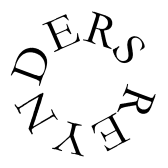

|
|
|
|
MOSSUKORUBAA rhythm taught to us here in Hawaii by Osumane Somoumah. The notation below represents what we learned. I'm including the notation in case someone might recognize the rhythm, perhaps by another name. What I am interested in is: Separate Dunun, Sangba and Kenkeni parts with bells Any information on the purpose / background of the rhythm Any clue as to the country / region / people of origin (Ousmane is Guinean)
michael wall 1 . . . 2 . . . 3 . . . 4 . . . djembe 1 B . . s S . B . B . O s O o S . => repeats 3 times, then plays 2nd phrase once and starts over O o S o O s O o S . O s O o S . djembe 2 B b O o . . S s :| djembe 3 S . O o . . S . s . O o B b S . We learned a more "ballet" style dunun arrangement - one person on a dunun-kenkeni setup, the other a dunun-sangba. bell x . x x . x x . x . x . x . . x dun/kenk D . k k . . k .(k). D . D . . D (k) is played every other cycle, beginning the 2nd. bell x . x . x . x . x . x . x x . . dun/sang D . . . s . D . D . s . s s . . dun/sang x . x . x . x . x . x . x . x . variations D . D . s . D . D . s . s s . . D . . . k . D . D . s . s s . . (if one person playing three)
N'GORONG Johannes Schya) & Albert Prak The Senufo People on the border of Mali and Ivory coast. Young girls dance it after their initiation The rhythm is similar to the track 'Toubala Kono' on Mamady Keita's CD Mogobalu. I just listened to a recording of the workshop, where Famoudou picked up a djembe and started playing solo and singing. It's only now that I hear his words: 'Toubala Kono', the title of the track on the Mogobalu CD. (Albert Prak)
> 1 . . . 2 . . . 3 . . . 4 . . . 1 . . . 2 . . . 3 . . . 4 . . . > > Call $ . S s . s . s S . S s S . . . > > Kenkeni x x . x . x x . x x . x . x x . > o o . i . . i . o o . i . . i . Albert > > x x . x x . x . x x . x x . x . > o o . . i . . . o o . . i . . . Johannes > > Sangba x . x x . x x . x . x x . x x . x . x x . x x . x . x . x . x . > . . o o . . i . . . o o . . i . . . o o . . i . . . o . . . o . > > > x . x x . x x . x . x . x . x . x . x x . x x . x . x . x . x > Johannes > Dunun x . x x . x . x x . x . x . x . x . x x . x . x x . x . x . x . Albert > o . . . . . . . i . . . . . . . i . . . . . . . o . . . o . . .> ^ > > Dj S . . . . b S s S . . . . b S s S . . . . . . . S s $ . S s $ .> ^ > Dj S . . s S . O o :| > > > 1 . . . 2 . . . 3 . . . 4 . . . 1 . . . 2 . . . 3 . . . 4 . . .
N'ZEDI (Congolese Pygmy rhythm) 9/8 . . * . . * . . . _ _ _ _ break O O O . O O O . . >> _ _ _ _ O O O . O O O . . _ _ _ djembe 1 Sf . S S O O S S . _ _ _ _ _ _ djembe 2 S S S . O O O S S O ^ start this one here
|